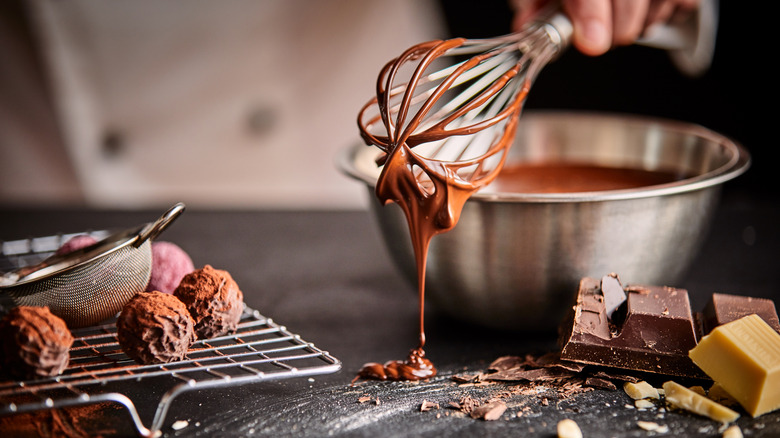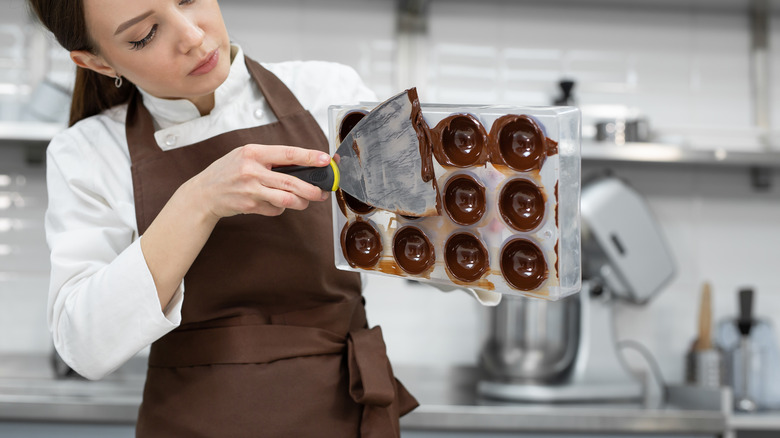Why You Should Use Warm Ingredients When Cooking With Chocolate
Having success with chocolate doesn't require a trip to culinary school or tutelage from a master chocolatier living high in the Swiss Alps. You simply need to understand a few basic rules.
Cooking with chocolate typically involves melting it, and often, other ingredients are added to the melted chocolate. For example, adding cream to melted chocolate creates a sauce called ganache. Ganache can also be made with a number of other ingredients, including liqueurs, fruit purees, nut butters, and spices (via Handle the Heat).
Before other ingredients are added, however, chocolate must go through a melting process called tempering. This process, which is used to give melted chocolate a desirable consistency, is sensitive to both temperature and moisture. If the chocolate reaches temperatures above 130 degrees Fahrenheit, it will burn and be unusable. If even a small amount of water or liquid is added to chocolate before it is tempered, it can cause the chocolate to seize (via Ghiradelli).
Pay attention to temperature
Properly tempering chocolate sets up the rest of your baking process for success, but the challenges don't end there. Temperature is still critical moving forward. In order to stay melted, chocolate must be kept above 90 degrees Fahrenheit (via What's Cooking America).
It's also crucial to pay attention to temperatures of all your ingredients when cooking with chocolate. A sudden temperature change to melted chocolate caused by the addition of a colder ingredient can cause undesirable solidification. Therefore, ingredients should be warmed to the ideal temperature range for melted chocolate, from 90 to 115 degrees Fahrenheit. As What's Cooking America notes, liquids like milk, cream, butter, and alcohol should be warmed, but not boiling, before added. Many people use warm liquids to fix chocolate that has seized, but the end result will be a ganache, not melted chocolate suitable for candy coatings or solid decorations.
It may seem like there are a lot of things you're not supposed to do when cooking with chocolate, but there's also plenty of room for positivity. Don't be afraid to experiment with different forms and textures of chocolate or adding salt to bring out more intricate flavors.

